When you think of .357 Magnum revolvers, you might be inclined to mentally picture a 6-inch barrel attached to a medium-sized frame. They are usually six-shooters, unless they’re in 5-shot snub-nose form. Hopefully, an adjustable rear sight adorns the frame. The mental image is completed by reflecting in the gun’s deep, polished blue finish.
Well, sometimes our mental images get a bit fractured. Take the gun we have before us today… a Ruger GP100 .357. This gun sports a 4.2-inch barrel, a seven-shot cylinder, two-piece rubber and wood grips, and a beautiful satin stainless finish. A finely adjustable rear sight and fiber-optic front sight complete the picture.
The gun is built like an Abrams tank, as are many of Ruger’s products. I know that’s a cliche that gets used a lot, but it’s true. Rugers tend to be overbuilt, and the GP100 is no exception.
Where did the GP100 come from? Here’s a quick backstory.
GP100 History
Ruger had entered the law enforcement revolver market in the 1970s with their Security Six revolver. Chambered in .357 Magnum, this DA/SA wheelgun was offered in a few different barrel lengths. It sold well, but found competition against S&W and Colt tough sledding when trying to get law enforcement agencies to buy it. Remember, this was when LEA used revolvers. Civilian shooters bought it, though… I can remember seeing several of them in shops back then.
Fast forward to 1985. Ruger discontinued the Security/Speed/Service Six and introduced two new models as replacements. One was the GP100, and the other was the SP-101. They were made for different purposes.
The GP line was eventually offered in calibers .22LR, .327 Federal Magnum, .38 Special, .357 Magnum, .44 Special, and 10mm. They were either 5-, 6-, or 7-shot, depending on the caliber. Finishes were either blue or stainless, and you could get a fixed rear sight or an adjustable one, again depending on the model.
Finally, barrel lengths were available in a range from short (2.5”) to long (6”). This revolver was made with heavy-duty use in mind. Many hunters carry one of these, either as a primary hunting gun or as a backup. They are sometimes carried in bear country, and I know that more than a few deer have fallen to them. They are also pressed into service for home defense, along with other uses.
The SP-101 is more of a concealed carry revolver, being a 5-shot built on a slightly smaller frame. Typically, the guns have a fixed rear sight and a 2- to 3-inch barrel, but as with the GP100, variations occur.
These guns serve different purposes and excel at their specific missions.
Photos
Let’s look at a few photos of our GP100…
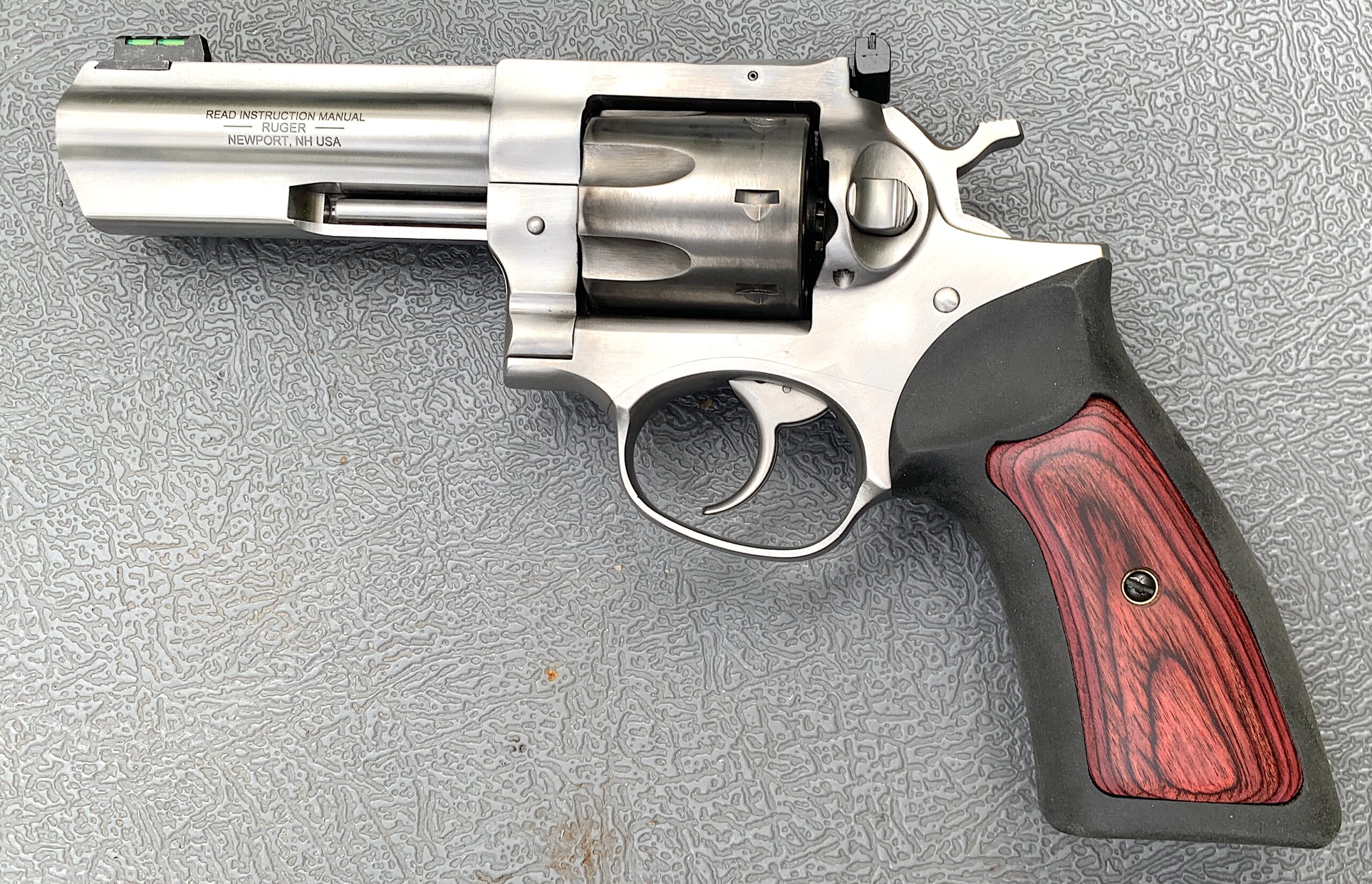
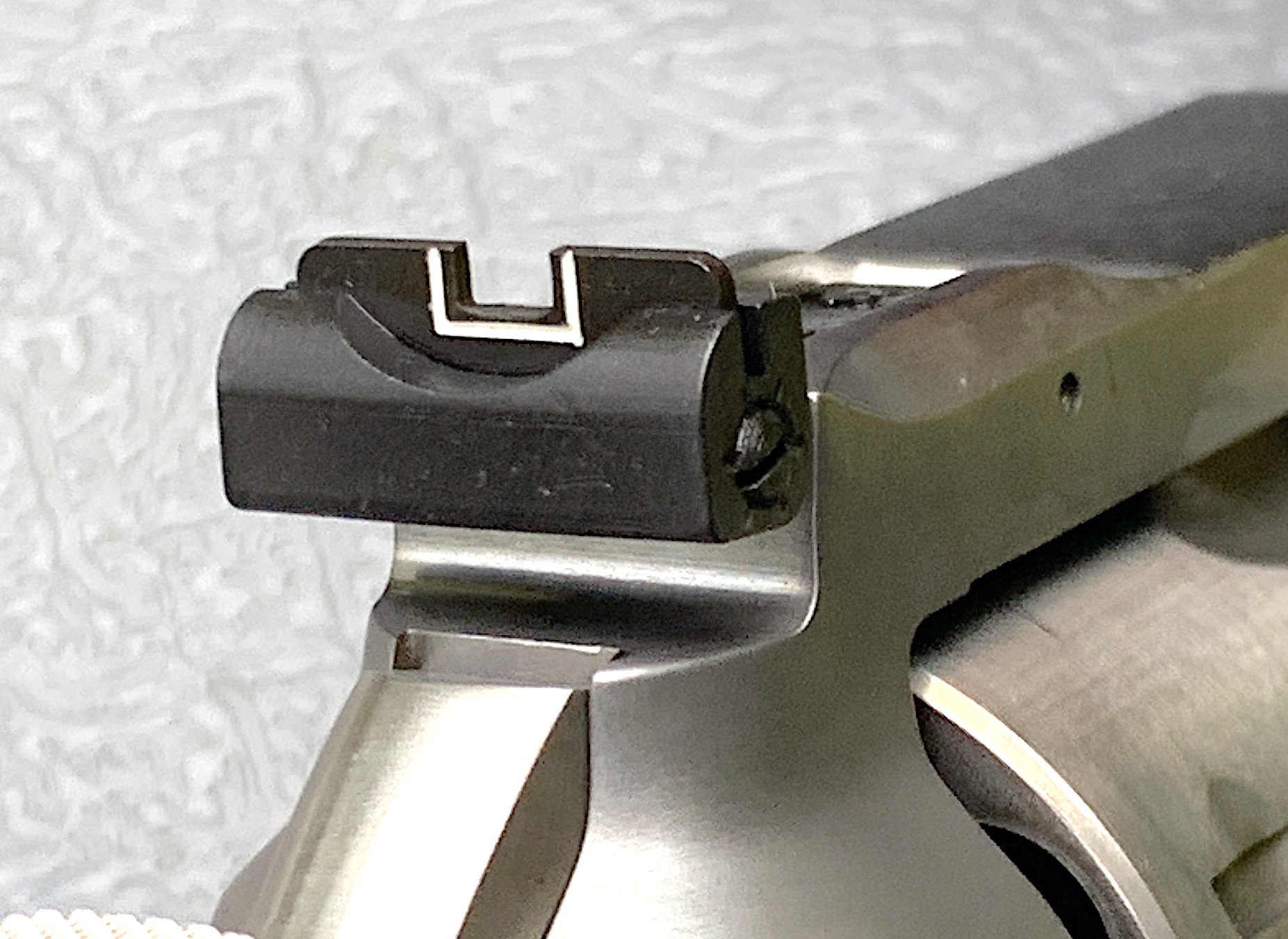
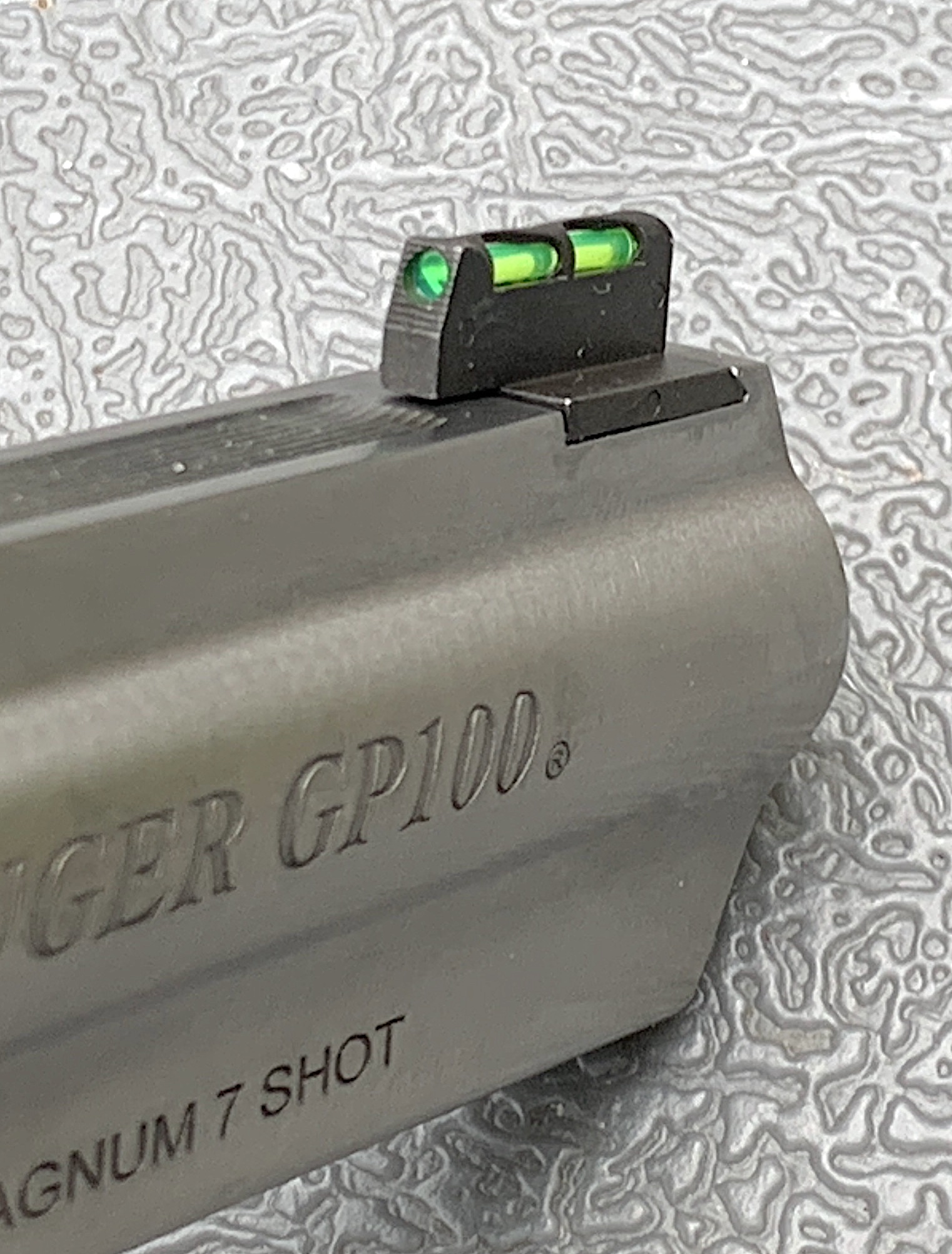
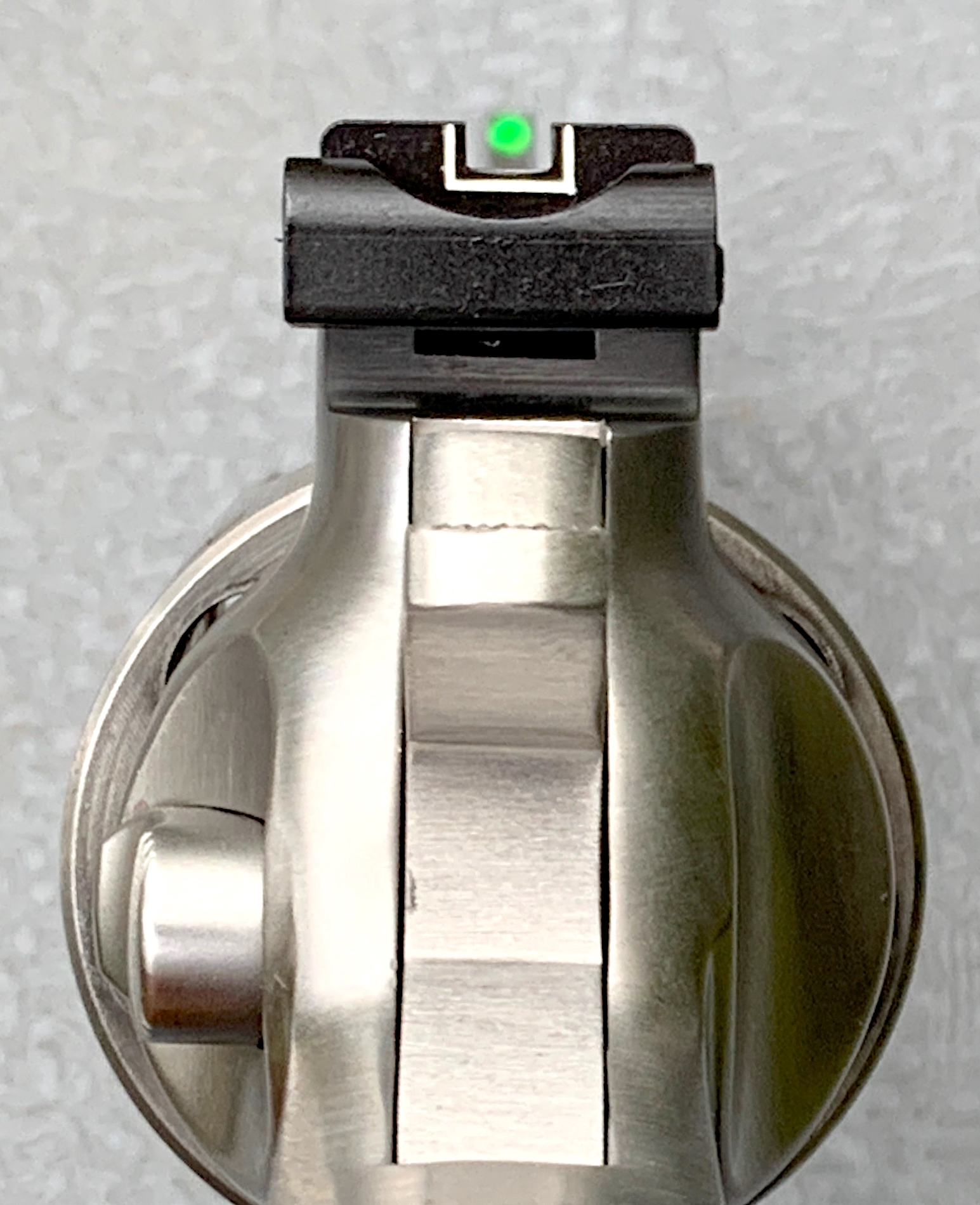
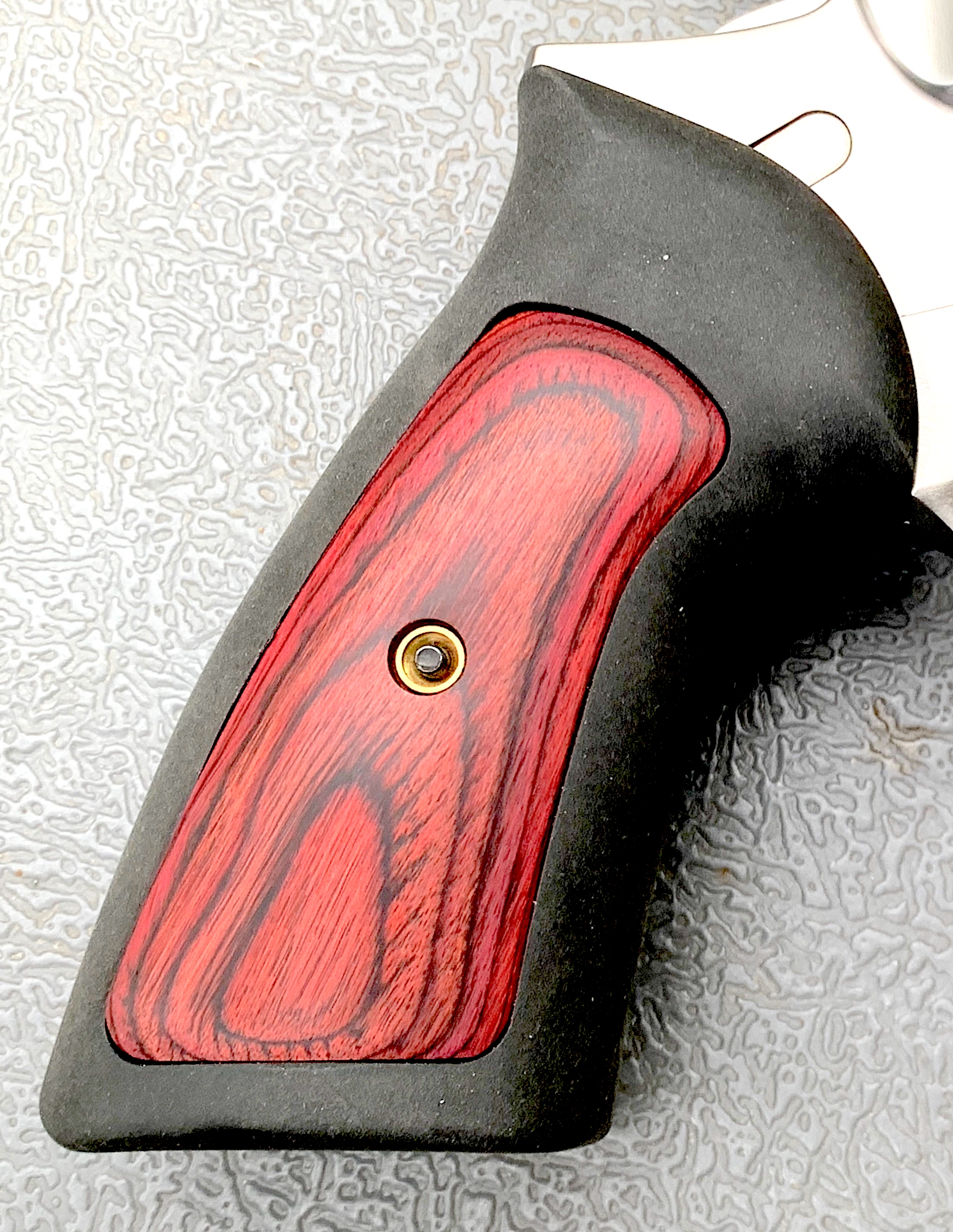
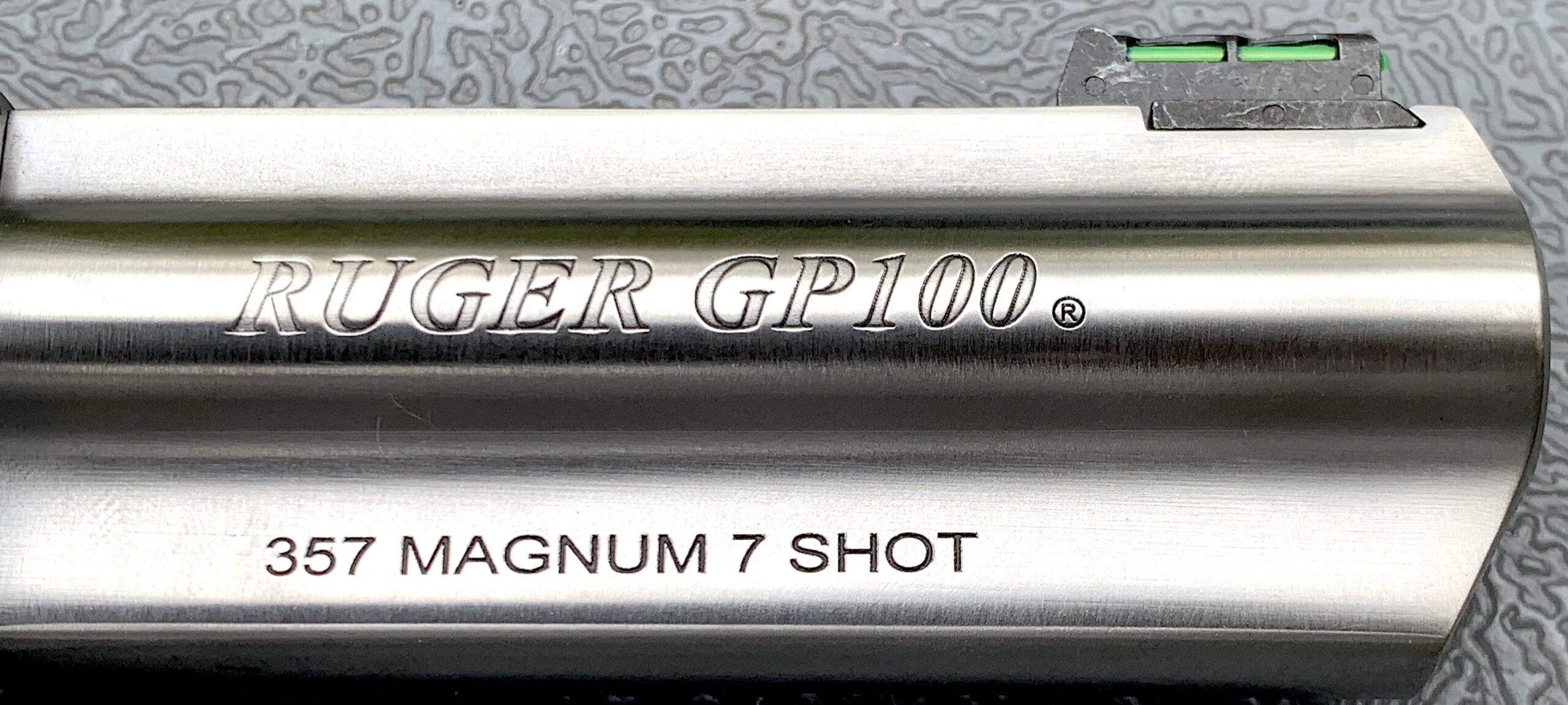
Specifications
Here are the specs, from the Ruger website…
- Grips Cushioned Rubber with Hardwood Insert
- Capacity 7
- Barrel Length 4.20″
- Overall Length 9.50″
- Material Stainless Steel
- Front Sight Fiber Optic
- Rear Sight Adjustable
- Twist 1:18.75″ RH
- Finish Satin Stainless
- Weight 40 oz.
- Grooves 5
- Available in CA No
- Available in MA No
- Suggested Retail $1129.00
Where To Buy
One Gripping Detail
Changing the grip on a GP100 is easy, as it does not have a grip frame to deal with. All you have is a mainspring housing, a small “post” that comes down from the frame. The grip screws to its bottom. That way, you can have custom-made grips of many types & shapes, as they won’t interfere with a grip frame, unlike most other mainstream wheelguns.
Shooting The GP100

I grabbed three loads to try in this revolver. They were all made by Black Hills… they send me ammo to use in my reviews, and it is good stuff. The loads included their 158-grain JHP, 127-grain HoneyBadger, and, for fun, their .38 Special 147-grain full wadcutter target load… that was almost like shooting .22s in this 40-ounce gun.
Here are a few 5-shot representative 25-yard targets – they are self-explanatory.
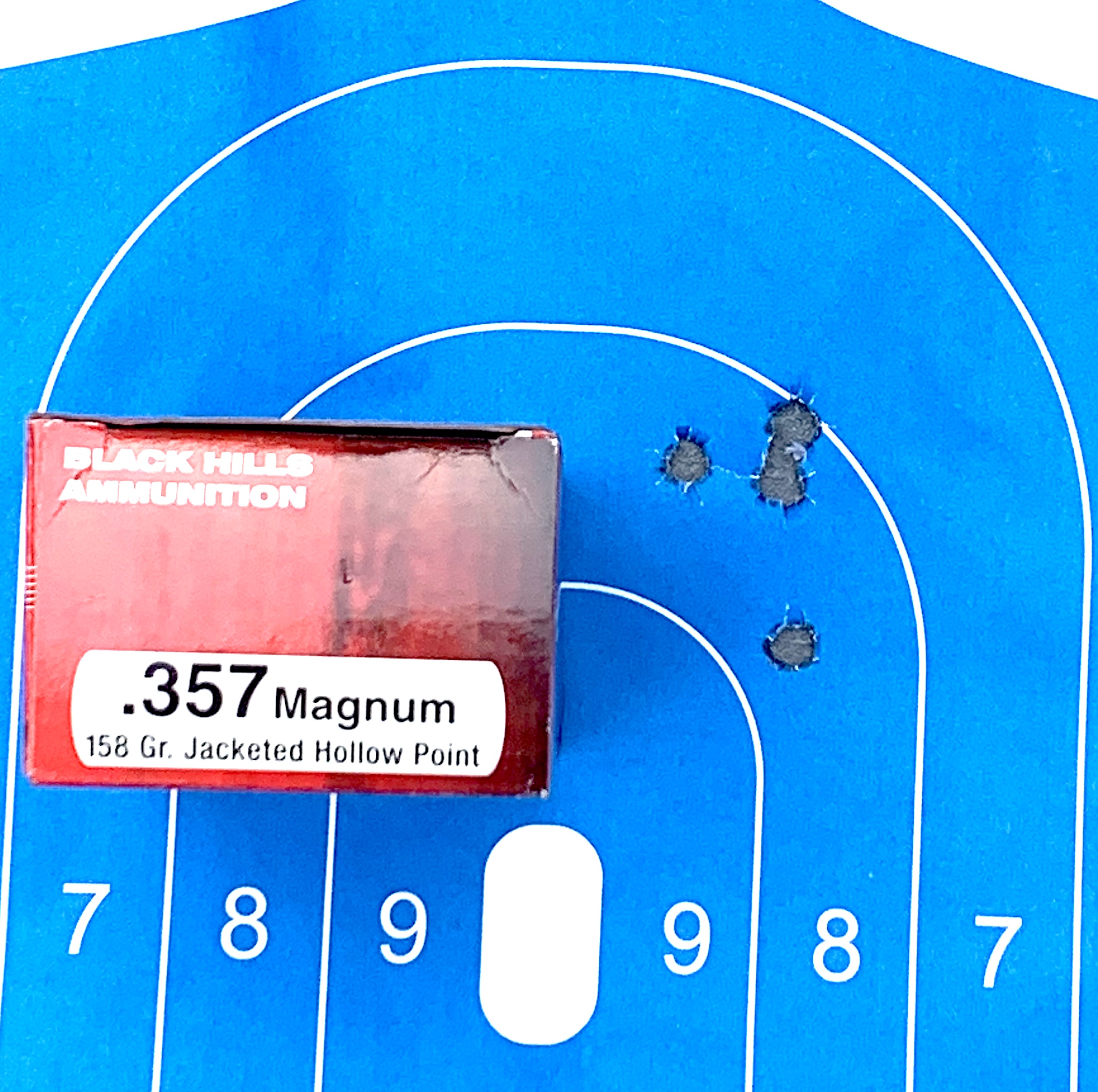

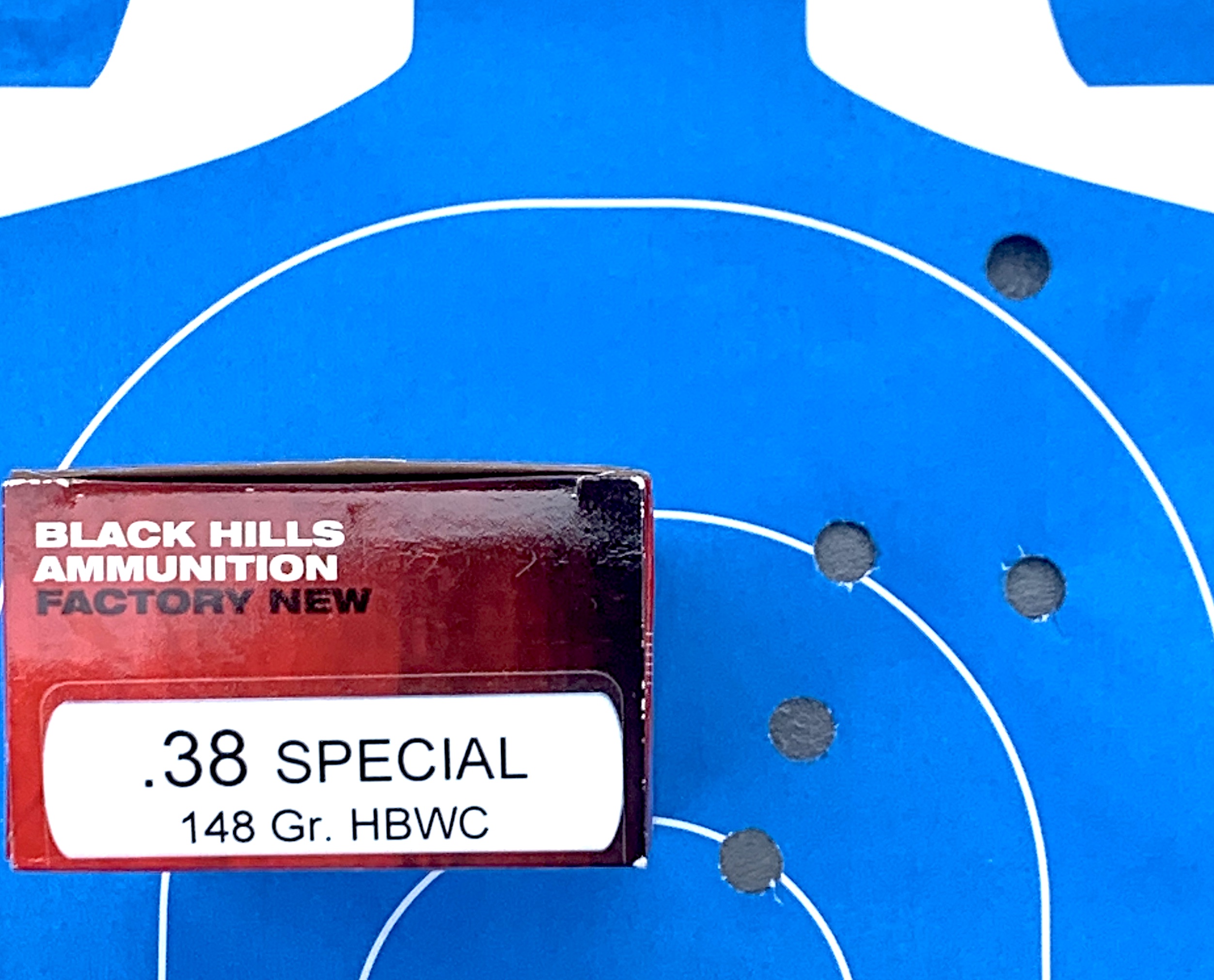
The HoneyBadger goes off with a huge “ka-boom”, but the recoil isn’t that bad. We’re looking at velocities around 1450 fps. I not only see this as a defense load, but, out of a long-barreled revolver or carbine, this would make a great deer round. The 148-grain HBWC felt almost like a .22 in my hand… a very mild target load. The gun shot well, overall. It would make a great backup to your main deer rifle.
So… Should You Have One Of These?
Well, obviously that’s a question I can’t answer, of course, but rhetorically speaking, I would certainly consider it. In our modern age of pistolcraft, most shooters carry semi-autos, with 9mm being king of that particular hill. Many shooters, especially younger ones, have very little to no experience with revolvers.
I am old, therefore I grew up, so to speak, shooting revolvers. (Don’t worry – I own my share of semi-autos, too…) I’ve owned, or own, many revolvers, ranging in caliber from .22LR to .44 Magnum. My 8 ⅜” S&W 629 has accounted for more deer than I can remember, and the pea shooters have earned their place in the woods hunting squirrels or protecting the chicken coop. Revolvers have their place, as they are easy to use and tend to be very reliable. No “bang?” Pull the trigger again.
One of the very best revolvers to own, in my opinion, is a 4-inch .357. This is one of the most versatile guns going. You can carry it (in a proper holster), either as a CCW or as a hunting gun. It can be used in competitions and excels in providing double bang for the buck, as you can shoot .38 Specials in it. Here in the Hoosier state, it is a legal deer gun if the barrel is at least 4 inches. That makes for one useful sidearm.
To answer the question, I would say a qualified “yes”, but everyone is different. Only you know the real answer. I do know one more thing… revolvers are making a comeback and are more popular now than they’ve been in years.
Perhaps you should consider picking one up the next time you’re at your favorite gun shop… You might like what you see!
Links To Items Used In This Review
Read the full article here





